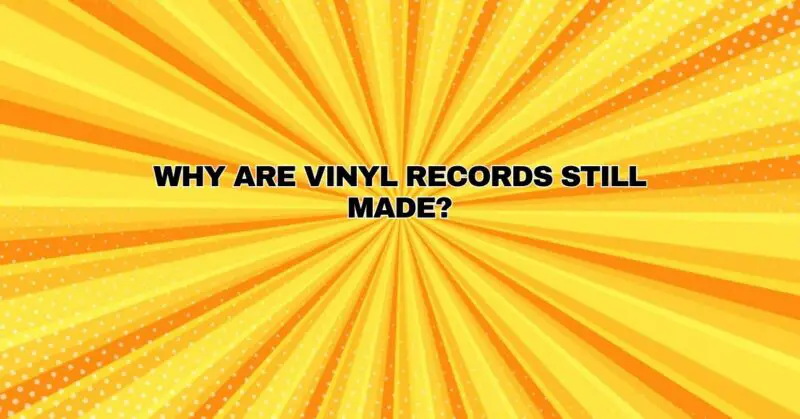In an era dominated by digital music streaming and portable devices, vinyl records continue to hold a unique and enduring appeal. These analog discs, once thought to be a relic of the past, have made an astonishing comeback, sparking a vinyl renaissance that has left music enthusiasts and collectors captivated. In this comprehensive article, we will explore the reasons why vinyl records are still made, their enduring popularity, and the cultural and sonic significance that keeps them spinning on turntables worldwide.
The Resurgence of Vinyl Records
Over the past two decades, vinyl records have experienced a remarkable resurgence. While their market share is still dwarfed by digital formats, vinyl has managed to carve out a niche that extends far beyond mere nostalgia. Here’s why vinyl records are still being made:
1. Sonic Warmth and Character
Vinyl records are celebrated for their unique sonic qualities. Audiophiles and music enthusiasts alike appreciate the warm, analog sound that vinyl provides. Unlike the often compressed and digitized audio of digital formats, vinyl offers a more organic, dynamic, and detailed listening experience. The analog nature of vinyl, with its inherent imperfections and surface noise, imparts a distinct character to the music that many find alluring.
2. Tangible and Collectible
Vinyl records are not just about sound; they are tangible artifacts of music history. Collectors and enthusiasts relish the tactile experience of handling vinyl, from carefully removing records from their sleeves to delicately placing the needle on the groove. Vinyl albums often feature captivating album artwork, liner notes, and additional inserts, enhancing their collectible appeal.
3. Album Art and Aesthetic
Vinyl records provide a larger canvas for album artwork, allowing artists and designers to create visually stunning and immersive packaging. Many music fans cherish the artistry of album covers and enjoy the ritual of exploring the artwork while listening to the music. Vinyl’s size and visual impact add to its charm.
4. Limited Editions and Exclusives
Artists and record labels have embraced vinyl’s resurgence by releasing limited edition and exclusive vinyl records. These releases often include special variants like colored vinyl, picture discs, or deluxe packaging. These unique offerings entice collectors and fans to add vinyl to their music collections.
5. Vinyl as a Medium of Artistic Expression
Some musicians view vinyl as a medium for artistic expression. They see the format as an opportunity to release music in a physical form that aligns with their creative vision. Vinyl allows for experimentation with album sequencing, side breaks, and bonus tracks, providing a unique listening experience.
6. Connection to Music’s Roots
Vinyl records connect listeners to the roots of recorded music. They harken back to a time when music was enjoyed through the tactile ritual of playing records on a turntable. This nostalgia for a bygone era resonates with many, especially those who appreciate music history.
7. Slow Listening and Mindful Consumption
Vinyl records encourage a more deliberate and mindful approach to listening. The act of selecting a record, placing it on the turntable, and listening through an entire side promotes a deeper engagement with the music, contrasting with the skip-heavy nature of digital playlists.
Conclusion
In an age of digital convenience, vinyl records stand as a testament to the enduring power of analog music. Their resurgence is not merely a nostalgic trend but a vibrant cultural movement that continues to grow. Vinyl records offer a unique listening experience, a tangible connection to music, and a platform for artistic expression. They bridge the past and present, appealing to audiophiles, collectors, and music lovers of all generations. Vinyl records are not just relics; they are vibrant, spinning reminders of the timeless allure of music in physical form.


